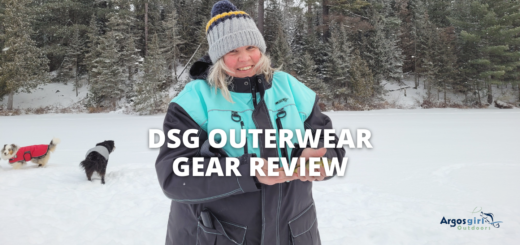Intro to Trolling
With the Owen Sound Salmon Spectacular and the Great Ontario Salmon Derby having ended in the last few weeks, it feels like a great time to go through an introduction to the basics of trolling.
There are a few different ways that you can troll for fish like salmon, lake trout, and rainbow trout, but the most common method is to use downriggers. If you were in Owen Sound recently, this is what you would have seen on those boats that were out fishing in Georgian Bay.
Downrigging uses a weight to drag your lure further down in the water column than it could ever reach on its own. It allows you to fish a specific depth and change it as needed. That’s handy when trying to target fish that could be 40-feet deep, or 90-feet deep, or anywhere in between on any given day.
The Basic Setup
The downrigger is either mounted on your boat, or on a board that can be mounted on your boat. A downrigger will have a spool of cable that runs along an arm to reach over the side of the boat. That cable attaches to a weight, often referred to as a cannon ball or just a ball. The weight has a release clip attached to the end of it. This is where you attach the line from your rod. When you open the clutch on your downrigger, the weight drags the line down the water column until you stop it at your desired depth. If a fish bites your lure, their weight will pull the line out of the release clip. Then you reel them in and get a nice picture with a beautiful fish!
That’s the simplified version of how this all works.
Downriggers
Downriggers come in all shapes and sizes and can be basic or have all the bells and whistles. At the end of the day they all have a spool of cable and an arm that gets the cable over the boat and into the water.
They can be manual, meaning you have to turn a crank to adjust the depth, or they can be electric, moving at the touch of a button. We’ve had both and although I love our Scotty electric downriggers that make the process super easy, I’ll always have a soft spot for our manual Riviera downriggers. They’re tiny, light, and worked perfectly in our 12-foot boat. They weren’t even all that exhausting to reel up and down.


Weights / Cannon Balls
A weight is how the whole system works. The weight hooks onto the downrigger and pulls your line down to the depth you want your lure at.
Weights have generally been in the shape of a cannon ball, hence the name. However, these days there are a wide variety of options for shape, including flatter ones that are thought to track through the water better, keeping your lure running more true and causing less drag.
We have both, and usually use the POW-r-bait these days. It’s a little more fish-shaped and has really reduced the drag we were seeing with the old cannon balls, keeping our lures at the depth we want them in.


Release Clip
Without a release clip, there would be no fishing. This is what connects the downrigger and weight to the line and lure. It attaches to the back of the weight and then the line gets set inside the clip. There’s a whole lot of opinions on how and where to set the line in the release. Set it near the outside of the release and it will take less effort to pull the line out of the clip.
We prefer the Offshore Downrigger Release Clips, but the Scotty Clips are easier to find in most tackle stores around us.

Rod
Purpose-built rods are needed for trolling. Something that is meant for downriggers, planer boards, or dipsy divers will have the ability to handle the uniqueness of trolling. These rods are going to be bent over most of the time, and need to be soft enough to handle the action of a fish hitting a lure and pulling a line out a release, without pulling the hooks out of the fish.
Pick up one of these rods and you’ll know what I mean.
We have a few different rods that we use while trolling, with my favourite being an old Diawa Heartland. But the backbone of our setup are some old Shimano TDR Trollling rods. These are still available today and usually have a price tag around $50, which isn’t bad at all.

Reel
Reels need to have plenty of line capacity for when those big fish bite a lure and then swim as far away from the boat as they can. We use levelwind linecounter reels. I particularly like them with a power-handle that gives you a bigger handle to grip.
Rod Holders
Rod holders are needed. There’s too much drag on these rods to hold them yourself. There’s a variety of different holders out there and we’ve used quite a few different ones. Our favourites are always changing, but we generally use Scottys or Tite-Loks or whatever is on the downrigger.
Line
Everyone has their opinion, but the most common thing you’ll see is monofilament. You need that stretch. We’re typically spooling up with Berkley Trilene Big Game. For the size of fish we typically catch in Georgian Bay, we use 20 lb-test or 30 lb-test line.
Lures
Take your pick. Just about anything can be dropped down behind a downrigger, but the most common will be trolling spoons, flasher/fly combos, meat rigs, plugs, and stickbaits.
I’ll be the first to admit that I’m biased towards spoons. They’re easy to rig, can be run with or without a flasher, and come in so many fun colours and designs. That said, during the Owen Sound Salmon Spectacular, Lymans (plugs) are such a great lure for us. There’s too much to be said about lures to discuss this here.

Fish Finder
To troll effectively, you really need to know what depth of water you’re in. This helps an angler decide how far down to set their weight/line. It’s also helpful to know what depth the fish are holding at, what bottom looks like, and if there’s a thermocline. In other words, a fish finder is needed. The good thing is, a very basic fish finder without GPS or any fancy functions is perfect. Having a way of tracking speed is also helpful.
Conclusion
This is the most basic introduction I can provide you for trolling and my goal was to make it easier to understand how the basic setup works. It’s not a how-to, but a look at what’s involved with trolling. Let’s be honest, everyone’s setup is going to be unique to them. There’s no one way to fish for anything. There are so many things to learn if you’re wanting to get into trolling, but there’s lots of information out there. Check YouTube for some great videos. Ask a friend if you can go out with them. Book a charter or guide and make sure to ask lots of questions while out.
There’s also a lot of good used gear available on online marketplaces.
What I will say is that downrigging quickly became one of my favourite ways to fish once I got used to it. I highly encourage you to try it out! Let me know in the comments if you want to learn more about trolling!
Want to see what goes on under the water? Check out my review of the Aqua-Vu Strike-Vu camera.















